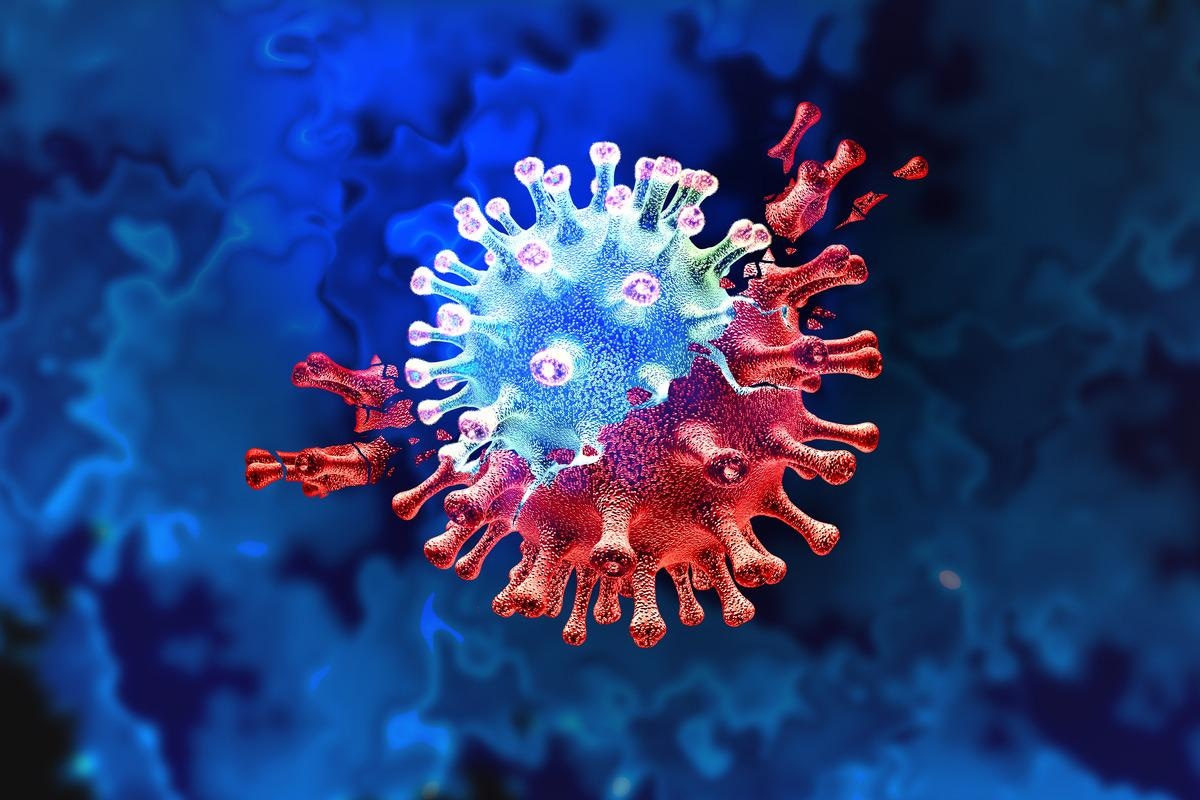In a recent study posted to the bioRxiv* preprint server, researchers evaluated the importance of the P681 residue within the furin cleavage site (FCS) of severe acute respiratory syndrome coronavirus 2 (SARS-CoV-2) spike (S) protein in determining the fusogenicity and syncytia formation ability of SARS-CoV-2 strains.
 Study: P681 mutations within the polybasic motif of spike dictate fusogenicity and syncytia formation of SARS CoV-2 variants. Image Credit: Lightspring/Shutterstock
Study: P681 mutations within the polybasic motif of spike dictate fusogenicity and syncytia formation of SARS CoV-2 variants. Image Credit: Lightspring/Shutterstock

 *Important notice: bioRxiv publishes preliminary scientific reports that are not peer-reviewed and, therefore, should not be regarded as conclusive, guide clinical practice/health-related behavior, or treated as established information.
*Important notice: bioRxiv publishes preliminary scientific reports that are not peer-reviewed and, therefore, should not be regarded as conclusive, guide clinical practice/health-related behavior, or treated as established information.
The researchers also assessed the neutralization of SARS-CoV-2 strains by the third dose of Pfizer’s BNT162b2 messenger ribonucleic acid (mRNA) vaccine. The SARS-CoV-2 strains assessed were Wuhan-Hu, Delta, Omicron, and Omicron BA.2 strains.
Background
The emergence of the SARS-CoV-2 Omicron variant has posed a global challenge in controlling the coronavirus disease 2019 (COVID-19) pandemic. mRNA vaccines such as BNT162b2 have been developed based on the S protein of the original Wuhan-Hu strain and thus, their efficacy against SARS-CoV-2 strains is questionable.
Studies have reported syncytium formation as the hallmark of several viruses including SARS-CoV-2, which invades the host by the interaction of SARS-CoV-2 S with the host angiotensin-converting enzyme (hACE2). Syncytia facilitate viral replication, dissemination, and immune escape from host neutralizing responses. The syncytia formation and cell fusion in pulmonary tissues of SARS-CoV-2-positive patients have also correlated with the clinical manifestations and severity of COVID-19.
Thus, characterizing the mutations or residues in SARS-CoV-2 S involved in cell fusion and syncytia formation is vital. The PRRAR motif is unique to SARS CoV-2 S and provides an evolutionary advantage to SARS-CoV-2 for entry into the target cells by promoting fusion between the virus and the cell membranes of infected cells.
However, the impact of the 681PRRAR/SV687 mutations on SARS-CoV-2 fusogenicity has not been extensively investigated.
About the study
In the present study, researchers assessed the impact of P681 mutations on the fusogenicity of SARS-CoV-2 strains and their neutralization after the third dose of the BNT162b2 vaccine.
Serum samples were obtained from 20 fully vaccinated individuals four months post administration of the third dose of the BNT162b2 vaccine to evaluate the neutralization of Wuhan-Hu, Delta, and Omicron single-round pseudoviruses using neutralization assays. Viral neutralization was determined based on the luciferase activity readouts of the human embryonic kidney (HEK)-ACE2 transduced cells, which were used to calculate the 50% inhibitory titers concentration (NT50) values. The p24 enzyme-linked immunosorbent assays (ELISA) were performed to ensure equal viral loads.
SARS-CoV-2 Delta and Omicron were isolated from the nasopharyngeal swab of a SARS-CoV-2-positive individual residing in Israel. SARS-CoV-2 was cultured in transmembrane serine protease 2 (TMPRSS2)-expressing VeroE6 (VeroE6/TMPRSS2) cells and observed for cytopathic effects (CPE). The 50% tissue culture infective dose (TCID50) was evaluated. The whole-genome sequences of the viral isolates were confirmed by nanopore sequencing.
The cells were transduced to express hACE2 proteins and subsequently cell fusion experiments were conducted to assess syncytia formation in the cells that expressed S proteins of Wuhan-Hu, Delta, Omicron, and BA.2 S pseudoviruses based on their green fluorescent protein (GFP) and DAPI (4′,6-diamidino-2-phenylindole) expression, as an indicator of fusogenicity. The assessment was based on examining the cell fusion images of the GFP1‐10- and GFP11-expressing cells using the Scikit-image label algorithm.
The capability of Wuhan-Hu, Omicron, and Delta to induce syncytia formation and cell fusion was also assessed using plaque formation assays that used live viruses to assess the plaques formed by Wuhan-Hu, Delta, Omicron, and BA.2 strains.
The results were statistically analyzed using the student’s t-test and graphs were obtained using the seaborn, matplotlib, numpy, and pandas image libraries and the GraphPad prism.
Results
In this study, Omicron demonstrated increased infectivity, five-fold higher than the Wuhan-Hu strain, with a remarkable 26-fold decrease in neutralization sensitivity induced by the BNT162b2 vaccine, with a relative 13-fold decrease compared to Delta. Further, while pseudoviruses with S proteins of Wuhan-Hu (P681) strain, Omicron (H681) variant, and Omicron BA.2 subvariant (H681) modestly promoted syncytia formation and cell fusion, Delta S (P681R) demonstrated increased fusogenicity and enhanced ability to form syncytia.
In the live virus plaque assays, the Omicron and Wuhan-Hu formed plaques of similar morphology whereas the plaques formed by Delta were more numerous but smaller with less unification. The introduction of one P681R mutation in Wuhan-Hu S or H681R in Omicron S restored the fusogenicity to levels comparable to that of Delta S, and conversely, the R681P mutation in Delta S significantly diminished the fusogenicity.
Overall, the study findings highlighted the waning of BNT162b2 vaccine efficiency with the inability to neutralize the Omicron variant and the importance of the P681 polybasic position within the SARS-CoV-2 S FCS in dictating syncytia formation and fusogenicity of SARS-CoV-2 strains.

 *Important notice: bioRxiv publishes preliminary scientific reports that are not peer-reviewed and, therefore, should not be regarded as conclusive, guide clinical practice/health-related behavior, or treated as established information.
*Important notice: bioRxiv publishes preliminary scientific reports that are not peer-reviewed and, therefore, should not be regarded as conclusive, guide clinical practice/health-related behavior, or treated as established information.